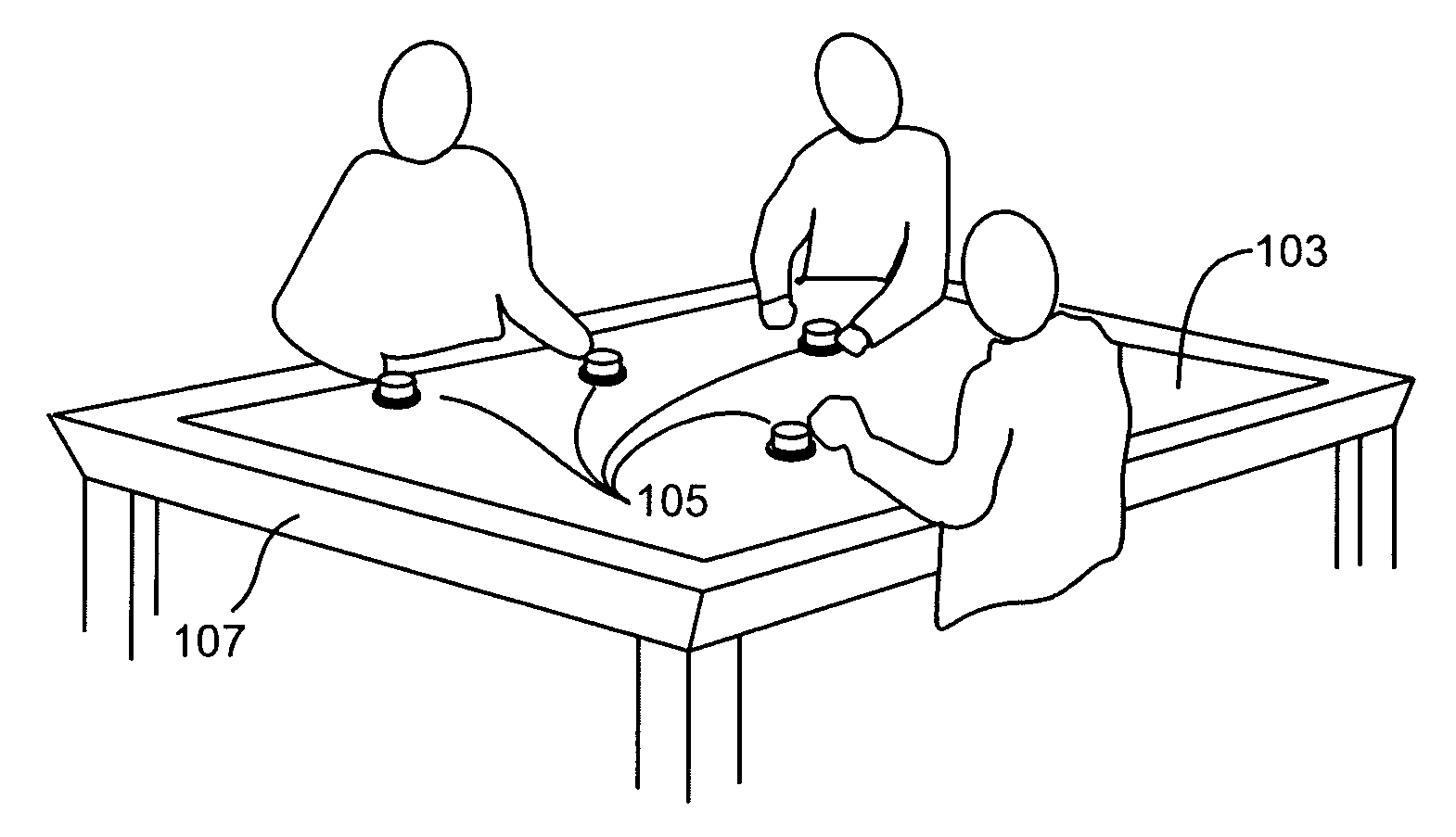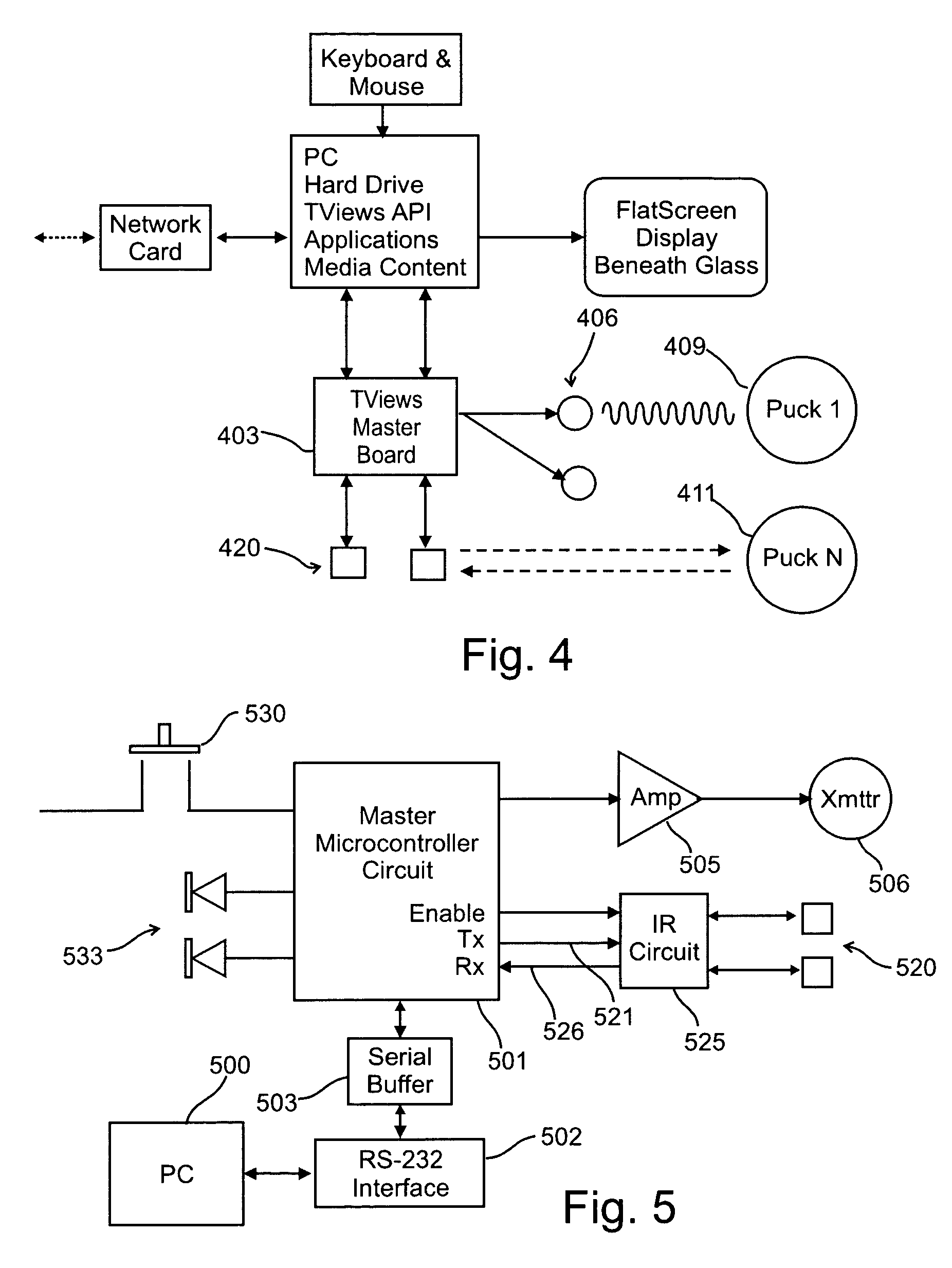Method for object identification and sensing in a bounded interaction space
a technology of object identification and interaction space, applied in the direction of speed measurement using gyroscopic effects, instruments, surveying and navigation, etc., can solve the problems of inability to provide extensible architecture that can support existing media tables, difficult to precisely locate objects on the surface of tables, and no early attempts to point to a general purpos
- Summary
- Abstract
- Description
- Claims
- Application Information
AI Technical Summary
Benefits of technology
Problems solved by technology
Method used
Image
Examples
Embodiment Construction
[0069]Before describing the details of the TViews design and implementation, it is useful to first provide a quick summary of the combination of technical features that have been used to fulfill these requirements.
[0070](a) In order to allow scalability of the interaction surface in size, it is important that the object positioning technology operates independently of the size of the interactive surface. This can be accomplished using time-of-flight position detection, in which an object's position is triangulated based on the time it takes for signals to travel from a small number of fixed transmitters (i.e. at least two, and preferably three or more) to a receiver embedded in the object. The TViews table is based on acoustic time-of-flight. Since acoustic positioning does not require antenna grids or other materials covering the interactive surface, it is possible to embed a digital display in the table surface that is not obscured.
[0071](b) In order to provide an extensible objec...
PUM
 Login to View More
Login to View More Abstract
Description
Claims
Application Information
 Login to View More
Login to View More - R&D
- Intellectual Property
- Life Sciences
- Materials
- Tech Scout
- Unparalleled Data Quality
- Higher Quality Content
- 60% Fewer Hallucinations
Browse by: Latest US Patents, China's latest patents, Technical Efficacy Thesaurus, Application Domain, Technology Topic, Popular Technical Reports.
© 2025 PatSnap. All rights reserved.Legal|Privacy policy|Modern Slavery Act Transparency Statement|Sitemap|About US| Contact US: help@patsnap.com



